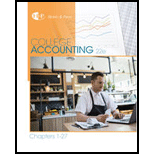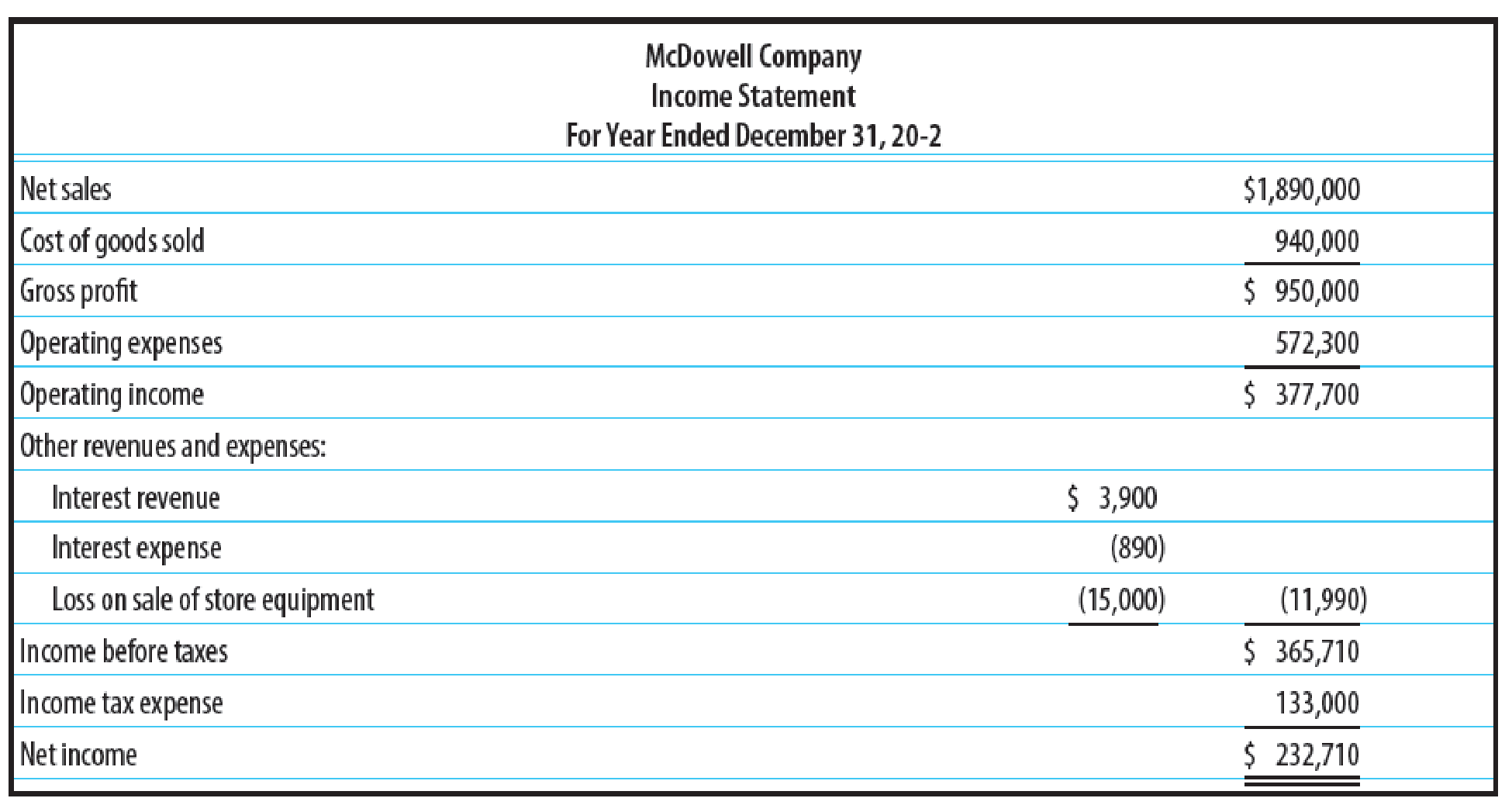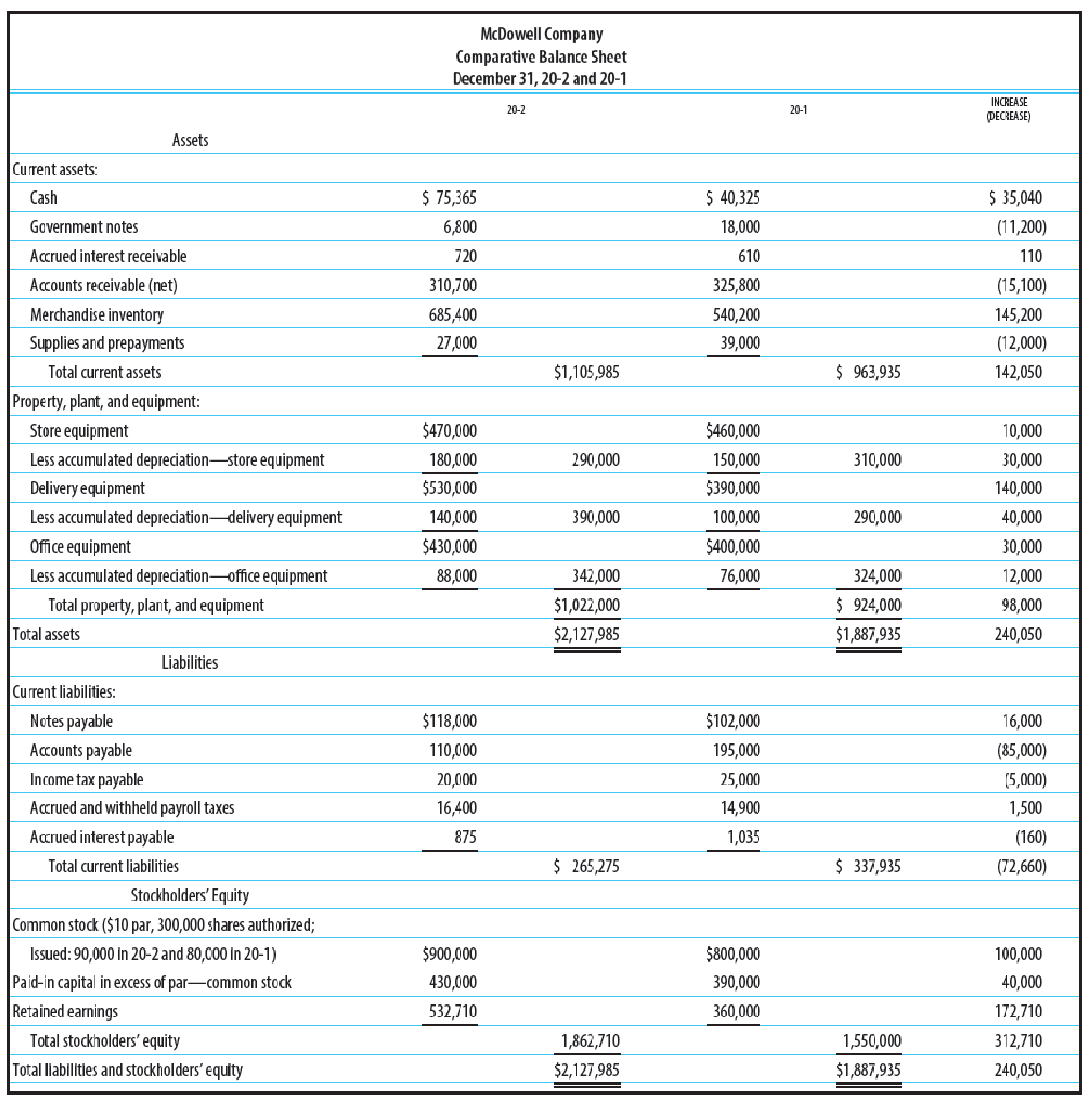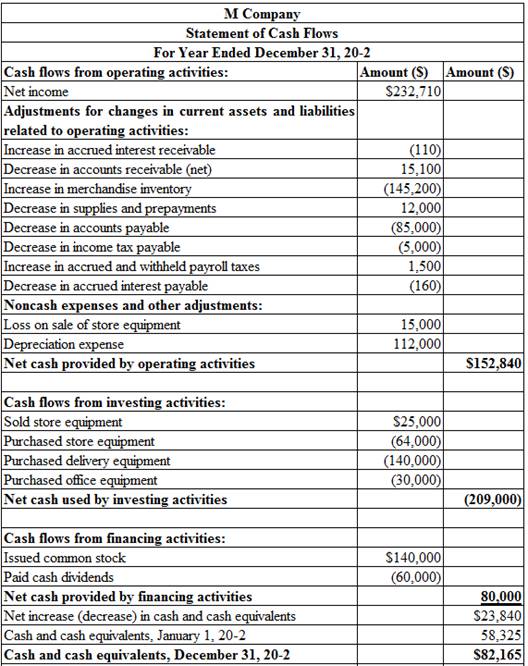
Concept explainers
EXPANDED STATE MENT OF


Additional information:
1. Store equipment was sold in 20-2 for $25,000. Additional information on the store equipment sold is provided below.

2.
3. The following purchases were made for cash:

4. Declared and paid cash dividends of $60,000.
5. Issued 10,000 shares of $10 par common stock for $14 per share.
6. Acquired additional store equipment by issuing a note payable for $16,000.

REQUIRED
Prepare a statement of cash flows explaining the change in cash and cash equivalents for the year ended December 31, 20-2.
Prepare a statement of cash flows explaining the change in cash and cash equivalents for the year ended December 31, 20-2.
Explanation of Solution
Statement of cash flows: This statement reports all the cash transactions which are responsible for inflow and outflow of cash, and result of these transactions is reported as ending balance of cash at the end of reported period. Statement of cash flows includes the changes in cash balance due to operating, investing, and financing activities.
Indirect method: Under indirect method, net income is reported first, and then non-cash expenses, losses from fixed assets, and changes in opening balances and ending balances of current assets and current liabilities are adjusted to reconcile the net income balance.
Cash flows from operating activities: Operating activities refer to the normal activities of a company to carry out the business.
The below table shows the way of calculation of cash flows from operating activities:
| Cash flows from operating activities (Indirect method) |
| Net income: |
| Add: Decrease in current assets |
| Increase in current liability |
| Depreciation expense and amortization expense |
| Loss on sale of plant assets |
| Deduct: Increase in current assets |
| Decrease in current liabilities |
| Gain on sale of plant assets |
| Net cash provided from or used by operating activities |
Table (1)
Cash flows from investing activities: Investing activities refer to the activities carried out by a company for acquisition of long term assets. It includes the purchase or sale of equipment or land, or marketable securities, which is used for business operations.
The below table shows the way of calculation of cash flows from investing activities:
| Cash flows from investing activities |
| Add: Proceeds from collection of loan made to borrowers |
| Sale of marketable securities / investments |
| Sale of property, plant and equipment |
| Proceeds from discounting notes receivables |
| Deduct: Purchase of fixed assets/long-lived assets |
| Loan made by the company to others |
| Purchase of marketable securities |
| Net cash provided from or used by investing activities |
Table (2)
Cash flows from financing activities: Financing activities refer to the activities carried out by a company to mobilize funds to carry out the business activities. It includes raising cash from long-term debt or payment of long-term debt, which is used for business operations.
The below table shows the way of calculation of cash flows from financing activities:
| Cash flows from financing activities |
| Add: Issuance of common stock |
| Proceeds from borrowings by signing of a mortgage |
| Proceeds from sale of treasury stock |
| Proceeds from issuance of debt |
| Deduct: Payment of dividend |
| Repayment of debt |
| Repayment of the principal on loan |
| Redemption of debt |
| Purchase of treasury stock |
| Net cash provided from or used by financing activities |
Table (3)
Prepare a statement of cash flows explaining the change in cash and cash equivalents for the year ended December 31, 20-2:


Table (1)
Working notes:
Calculate the amount of cash and cash equivalents at January 1, 20-2:
Compute the amount of cash paid for interest in 20-2:
Step 1: Calculate the change in accrued interest payable.
Step 2: Calculate the amount of cash paid for interest in 20-2.
Compute the amount of cash paid for income taxes in 20-2:
Step 1: Calculate the change in income taxes payable.
Step 2: Calculate the amount of cash paid for income taxes in 20-2.
Want to see more full solutions like this?
Chapter 23 Solutions
College Accounting, Chapters 1-27
 Managerial AccountingAccountingISBN:9781337912020Author:Carl Warren, Ph.d. Cma William B. TaylerPublisher:South-Western College Pub
Managerial AccountingAccountingISBN:9781337912020Author:Carl Warren, Ph.d. Cma William B. TaylerPublisher:South-Western College Pub Financial And Managerial AccountingAccountingISBN:9781337902663Author:WARREN, Carl S.Publisher:Cengage Learning,
Financial And Managerial AccountingAccountingISBN:9781337902663Author:WARREN, Carl S.Publisher:Cengage Learning, Financial AccountingAccountingISBN:9781337272124Author:Carl Warren, James M. Reeve, Jonathan DuchacPublisher:Cengage Learning
Financial AccountingAccountingISBN:9781337272124Author:Carl Warren, James M. Reeve, Jonathan DuchacPublisher:Cengage Learning College Accounting, Chapters 1-27AccountingISBN:9781337794756Author:HEINTZ, James A.Publisher:Cengage Learning,
College Accounting, Chapters 1-27AccountingISBN:9781337794756Author:HEINTZ, James A.Publisher:Cengage Learning, Financial AccountingAccountingISBN:9781305088436Author:Carl Warren, Jim Reeve, Jonathan DuchacPublisher:Cengage Learning
Financial AccountingAccountingISBN:9781305088436Author:Carl Warren, Jim Reeve, Jonathan DuchacPublisher:Cengage Learning Intermediate Accounting: Reporting And AnalysisAccountingISBN:9781337788281Author:James M. Wahlen, Jefferson P. Jones, Donald PagachPublisher:Cengage Learning
Intermediate Accounting: Reporting And AnalysisAccountingISBN:9781337788281Author:James M. Wahlen, Jefferson P. Jones, Donald PagachPublisher:Cengage Learning





